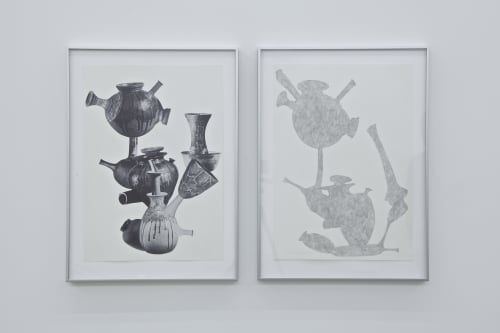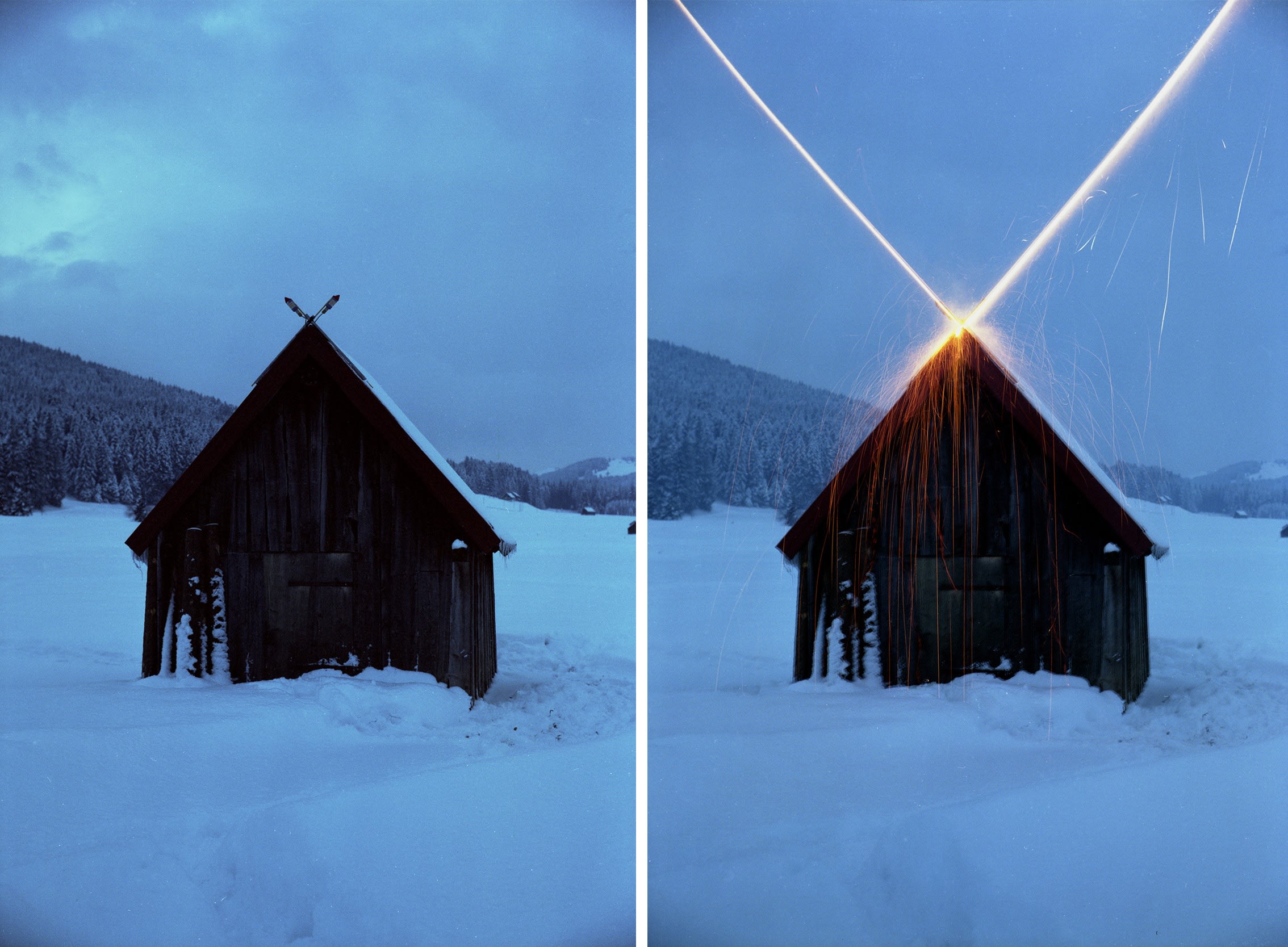Jason de Haan:
Free and Easy Wanderer
In this series, a range of found fossilized shells (clam, brachiopod, turtle & tortoise) rest in various configurations on a range of commercially available humidifiers. In each instance vapour caresses the form of the fossil(s) and, through assisted erosion, carries mineral particles of the once-living form into the exhibition space. A new atmosphere is generated in which fossil particles can be inhaled and carried away in the lungs; a body within the body. Given time, one may witness the fossil slowly (and even completely) disappearing.
Various versions of the works exist. According to the mineral composition of a specific fossil as well as the particular intensity of a specific humidifier, they establish a number of simultaneous, yet individual tempos. From the moment any of these are first engaged (turned on), a unique and unpredictable signature begins to unfold: several of the fossils, depending upon the geological conditions of their initial formation, may not reveal wear for years, while others begin to visibly disintegrate within days, if not hours. The fossil, a seemingly permanent object—having maintained its current form for many millions of years—takes on a new material life, artificially re-introduced into a state of flux; no longer static and inert, its form enters a new, transformative time-scale. As a matrix these works can be seen to operate as the complex mechanizations of a larger clock, counting down to the eventual disappearance of even the most stubborn of vestiges.
Free and Easy Wanderer employs several essential systems: electricity generated from sources similar in origin to the fossils (coal, oil, etc), activates mass-produced domestic machines originally designed to assist breathing. Not only does the fossil undergo a state change, the water passing through these plastic devices transforms from liquid to mist, carrying with it ancient mineral particles. Over time this mist fills, and is dispersed beyond, the exhibition space—one long and final exhale. Conceptually central to this body of work are possibilities for reconfiguration and the free movement of bodies (corporeal, geological, microscopic), parallel to what can be imagined as a “free and easy wanderer’s” movement through evaporated, inconsequential, and unheeded constructs of time and space.


